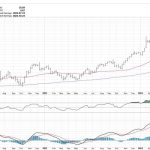Earnings season is a highly anticipated time for investors, as it provides a valuable opportunity to gauge the financial performance of publicly traded companies. Analysts and traders closely examine corporate earnings reports and outlooks to make informed investment decisions. However, there are certain key aspects and indicators that investors should keep an eye on during earnings season to better grasp the overall health and potential of a company.
One vital metric to watch during earnings season is revenue growth. Strong revenue growth often indicates that a company’s products or services are in demand, and that the business is effectively capturing market share. Investors should look for consistent or increasing revenue figures, as this can signal positive momentum for the company.
Another crucial element to monitor is earnings per share (EPS). Earnings per share reflects a company’s profitability and is calculated by dividing net income by the number of outstanding shares. Higher EPS is generally seen as a positive sign and can lead to stock price appreciation. Investors should pay attention to any significant changes in EPS compared to previous quarters or analysts’ expectations.
Additionally, gross margins and operating margins are important indicators of a company’s operational efficiency. Gross margin measures the percentage of revenue that remains after deducting the cost of goods sold, while operating margin reflects the percentage of revenue left after subtracting operating expenses. Improving margins suggest that a company is managing costs effectively and generating more profits from its core operations.
Debt levels and cash flows are also critical factors to consider during earnings season. High levels of debt can burden a company and limit its ability to invest in growth opportunities. Investors should assess a company’s debt-to-equity ratio and cash flow trends to evaluate its financial stability and liquidity. Positive cash flows are essential for funding day-to-day operations and strategic initiatives.
Lastly, guidance and forecasts provided by company management play a significant role in shaping investor sentiment. Guidance refers to the outlook and expectations regarding future financial performance, while forecasts are projections of revenue, earnings, and growth prospects. Investors should carefully analyze management’s guidance and assess whether it aligns with market expectations and economic conditions.
In conclusion, earnings season is a crucial period for investors to analyze the financial health and prospects of companies. By focusing on key metrics such as revenue growth, earnings per share, margins, debt levels, cash flows, and guidance, investors can make informed decisions and position themselves for long-term success in the stock market. It is essential to conduct thorough research and due diligence during earnings season to identify opportunities and mitigate risks in the ever-changing world of investing.



